Jul 02, 2025
Jul 02, 2025
by Tarun Rana
The famous address at Harrington Street (presently Ho Chi Minh Sarani) of a manor house, a three storied ochre coloured building with a portico, set in the midst of a fairly large open space, its eastern side bordering Camac Street – yes, that was the mansion built for himself in 1907 by the foremost Bengali entrepreneur, Sir Rajendranath Mookerjee.
Sir R.N., in brief, - after whom the Mission Row had been renamed following his demise on May 15, 1936 - had this grand edifice constructed by his own firm, Martin & Co., when he along with his partner Sir Thomas Acquin Martin reached a sufficient stage of success and prosperity in their business venture of constructing water works across the country, building important offices, memorials, mosques and even laying narrow gauge train lines known as “Martin Rail “ in a bid to connect the city with the countryside.
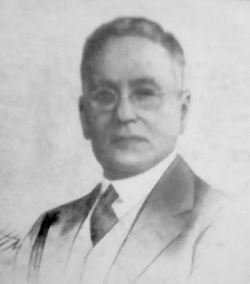 Born on June 23, 1854 in a non- descript village called Bhabla in the Basirhat sub-division of a lawyer father who died when the boy was only six, Rajendranath was brought up by his mother in a joint family. A kind but resolute lady that she was, no pain was spared to educate the boy in the best possible manner in English education recently introduced.
Born on June 23, 1854 in a non- descript village called Bhabla in the Basirhat sub-division of a lawyer father who died when the boy was only six, Rajendranath was brought up by his mother in a joint family. A kind but resolute lady that she was, no pain was spared to educate the boy in the best possible manner in English education recently introduced.
How that rustic lad, by dint of hard work and perseverance, ended becoming a civil engineer from Presidency College, then being taught for the first time, the Engineering Sir Rajendranath Mookerjee (1854-1936) College at Shivpur not yet founded; how he steadfastly refused the lucrative Government job of the surveyor of a bheel as he wanted to earn his living independently by doing business and how he got the break he so earnestly desired because of his ready wit which influenced an English man named Sir Bradford Leslie, the then Chief Engineer of the Corporation of Calcutta,( famous as a builder of the pontoon bridge over the Ganges which connected the cities of Calcutta and Howrah ) – is a fascinating story one needs to learn from the only extant book on him – Sir Rajendranath Mookerjee - A Personal Account written in 1933 by his confidante K. C. Mahindra, later on the cofounder of the present day giant company Mahindra & Mahindra.
If not exactly a rags to riches fairy story of the sort we are generally familiar with in the West – of the Ford, Rockefeller and Edison type, Rajendranath’s rise to fame and wealth was largely due to his grit and intelligence, fighting every inch in the British ruled India, overcoming all the hurdles and ‘imperfect sympathies ‘ the natives were subjected to particularly in business venture. The reason why he chose to christen the firm he co-partnered with Acquin Martin as ‘Martin & Co’ only, and not ‘Martin & Mookerjee’.
The firm which had the distinction, whether we know it or not, of constructing the Victoria Memorial, a pet project of Lord Curzon to commemorate in India Queen Victoria’s long and glorious reign. Entrusted with the task of laying the foundation only, of this heavy building on the shifting soil of the Maidan, Sir William Emerson, the renowned architect, was so impressed by Rajendranath’ expertise in resolving many critical issues that the entire job of constructing this marble splendour was awarded to Martin & Co. With Acquin Martin not on the scene as he died in 1906, Rajendranath as the Senior Partner rose to the occasion and the Memorial was completed successfully in 1921 for which he was knighted in 1922.
Rajendranath became the Chairman of the Engineering Committee which recommended unanimously construction of a cantilever bridge in place of the old floating type spanning the river Hoogly for over fifty years. It was after this design that the present Howrah Bridge was later on built with his son Birendranath at the head of the Commission.
The hallowed Sri Sri Ramakrishna Temple at Belur is the last classic architectural marvel Rajendranath had got executed by his firm Martin & Co. at no profit and under his own supervision before he breathed his last. Even the Assembly House has the name of the once renowned construction company as its builder in a brightly polished copper plaque.
If one had the opportunity of entering into the portal of this magnificent building at 7 Harrington Street called the Mukherjee House, one would be immediately awe struck by the heavily burnished door way with features; the lift of old make, the second one of its kind in the country – the first one having been installed in the Governor’s House at the same time; a copper bas relief of the Nataraja ( Lord Shiva in the posture of a wild dance) adorning the space beside the lift; the bronze figures of crouching lions and speeding cheetah under the wooden staircase.
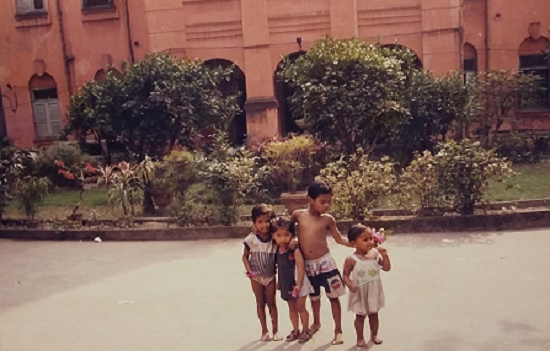
Mukherjee House at 7 Harrington Street, Kolkata
As one winds up the broad stairs, one is amazed by the darkish railings possibly of mahogany stretching straight up to the floors above and a chandelier hung right from the ceiling of the roof. Once on the first floor verandah, two full length portraits of Sir R N and his wife, Lady Jadumati Mookerjee in gold embroidered frames with the one of Sir Biren in between would have greeted you.
No one can miss the grandfather clock and stop wondering the passage of time. Everything in place – the medals, medallions, paintings and photos - the occupants only were missing.
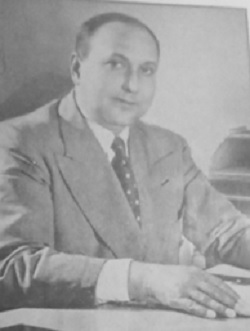 Birendranath, the youngest son, born on February 18,1899 who went on to Cambridge for higher studies after having his degree in Mechanical Engineering from Bengal Engineering College, Shivpur held the reins of paternal business after Rajendranath. He not only maintained but succeeded in expanding the enterprise multifold. But his single most achievement was to turn Indian Iron and Steel Co. Limited (IISCO) at Burnpur into a vast, full-fledged iron and steel making organization after Independence at par with TISCO
Birendranath, the youngest son, born on February 18,1899 who went on to Cambridge for higher studies after having his degree in Mechanical Engineering from Bengal Engineering College, Shivpur held the reins of paternal business after Rajendranath. He not only maintained but succeeded in expanding the enterprise multifold. But his single most achievement was to turn Indian Iron and Steel Co. Limited (IISCO) at Burnpur into a vast, full-fledged iron and steel making organization after Independence at par with TISCO
It is to his credit that the World Bank granted multi-million dollar loan number of times to a private sector company, only on the strength of the honesty and managerial capacity of the men at the helm. Expansion and repairs quickly done, the battle cry at Burnpur was production and more production - better than the year previous.
On Sir Biren’s role, Mr. N. R. Srinivasan, the great scholar and chronicler of Indian iron industry in his book on the history of IISCO (1983) had this to say -
“During the decade 1953 to 1962 – the period of two major extensions - Sir Birendranath Mookerjee was acknowledged as the imposing leader, as with his dynamic personality he was able to galvanize the team at Burnpur and also at the Head Office in Calcutta and produce results which won admiration both at home and abroad.”
Again, “Those were the glorious years”, he went on to comment, “but too few though, when the Company carved for itself a niche as one of the best operated steel plants of the world.”
After 1967, the established order in Bengal and New Delhi changed and with it everything became topsy turvy. First of all, on the basis of a report of the Monopolies Inquiry Commission headed by Justice Mr. K. C. Dasgupta in 1964 which found Martin Burn Ltd ranking third after the Tatas and Birlas in terms of capital block and assets and subsequent amendment to the Companies Act of May 28, 1969, IISCO was delinked from its parent managing company Martin Burn. The umbilical cord thus severed, IISCO faced serious funds crunch which it required most for the much needed repair of its existing old machineries.
Then the turbulent days on the labour front dealt a body blow to the fortunes of IISCO recovering from which was near difficult. The Central Government turning the other way, Nationalisation seemed to be the only remedy. And on July 14, 1972 through an act in the Parliament IISCO was nationalised – rightly or otherwise – events later proved. There was widespread jubilation at Burnpur and elsewhere in the state.
Sir Biren Mookerjee, who was not paid any compensation for nationalization, in bidding adieu to the shareholders had made a touching statement:
“I have intimately spent over forty years with your Company and have seen it grow from only two blast furnaces to what it is today, with what potentialities there are for its future expansions. I wish in all sincerity all the very best for its future.”
Mr. Srinivasan summed up saying –
“An era came to a close with the passing away of Sir Birendranath Mookerjee on November 04, 1982….. He led Indian Iron to the pinnacle of glory. He did not court establishment, which cost him dearly.”
Now, of course, after decades of a fateful ghostly existence, its prospect has brightened with a surge in the demand of iron and steel in the country and outside.
A tragic Bengali Industrialist, Sir Biren had the misfortune of witnessing before he breathed his last how the business empire his father had built up almost single handedly and which he had further nurtured and expanded to the best of his capacity tumbled one after another. Martin Rail came to a halt right after IISCO and many other sister industrial concerns thereafter. And the last to fall was Martin Burn itself – its shares were sold.
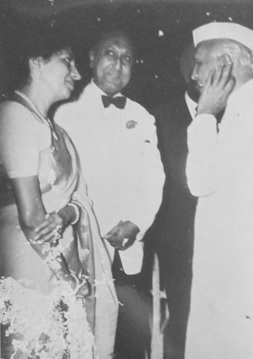 Now even the ancestral house has been sold out, renovated and redesigned beyond recognition. So long as Lady Ranu Mookerjee – Rabindranath’s dear darling daughter- alike ‘Ranu ‘who grew up to be his muse and who got married to Birendranath in 1925 – was alive, the move to sell the property was stalled.
Now even the ancestral house has been sold out, renovated and redesigned beyond recognition. So long as Lady Ranu Mookerjee – Rabindranath’s dear darling daughter- alike ‘Ranu ‘who grew up to be his muse and who got married to Birendranath in 1925 – was alive, the move to sell the property was stalled.
Here was the ‘Last Lady’-beautiful, gracious, groomed by the poet, her father-in-law Rajendranath and her husband for the dual role she would have to play in future : as the First Lady of the industrial conglomerate and “My Fair Lady” of culture in Bengal being the moving force behind Academy of Fine Arts, Calcutta for long. And she insisted on retaining this last vestige of her family’s mansion of pride.
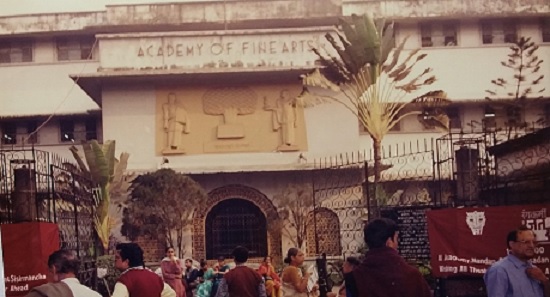
Photo - Academy of Fine Arts, Kolkata
Even the Corporation resisted the bid till the last, but now apparently with the permission of the statutory authorities, the hallowed house, in a gala new look after restoration, has been permitted to be used for commercial purposes with a chic gallery called Sir RNM Galleria 1910 and a museum. Thank God – the manor house has not been pulled down, it being a heritage structure of the first order.
The curtain has finally fallen on the century old abode of the Mookerjees of Bengal, three legendary personalities who had made significant contributions to the industrial, cultural, city planning and architectural development of Bengal, nay India. But their figures stand silhouetted brighter than ever against the backdrop of disintegration of all these into the sands of time.
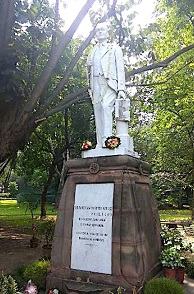
Statue of Sir RN Mookerjee at the Victoria Memorial Hall, Kolkata
20-Jun-2020
More by : Tarun Rana

|
I want to know about Mr. Sailen Mukherjee Chief Engineer,Township and planning,of IISCO Burnpur who worked under Sir Biren Mukherjee. Mr. Sailen Mukherjee died at an early age of 42 years leaving behind four small children, Dahlia, Keya, Swapan and Shovan Mukherjee.I am son of Dahlia Mukherjee. |

|
Mr Tarun Rana, I am of the same lineage as Sir Rajendra Nath. It would give me much pleasure to be in direct touch with you. Regards. |

|
Me too! Anyone know who Rajendra Nath Mookerjee’s sisters were? Their first names? One married Behari Lal Chatterjee of Serampore and Calcutta. |

|
I would like to read more untold stories of Sir Rajen and Sir Biren. I am also interested to know how the shares of Martin Burn were disposed of. Why this ancestral home of Sir Biren could not be preserved ? I am also interested to know about the descendants of Sir Biren. |